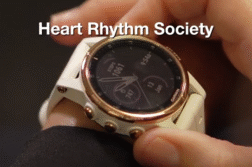PHILADELPHIA, Pa. (Ivanhoe Newswire) – Between two and three million Americans are living with congenital heart defects. Now, a new device means a less invasive procedure for people with leaking heart valves, Harmony Heart Valve.
Patients who are born with a heart defect and have surgery to repair it know that as they age, they may need additional heart surgery. A first in-the-world device is now allowing doctors to treat patients with congenital heart disease in a less invasive way, meaning less time in the hospital, and a much easier recovery.
Fifty-one-year-old Russell Soloway eats right, works out, and loves long hikes with his fiancé, Shara. For years, he’s been preparing his body for a second open-heart surgery, that he knew he’d need someday.
Soloway was born with a congenital heart condition and had his first open heart surgery as a child.
“One of the first, at my age to have it repaired,” Soloway emphasizes.
Three years ago, Soloway’s cardiologist determined his pulmonary valve was leaking blood. At the time, Soloway was a busy federal litigator and hated the idea of slowing down for a major procedure.
“Four to eight months of recovery and I’m thinking, ‘Wow, that would really disrupt my life’,” Soloway explains.
Instead, in October of 2019, Soloway became one of the first patients in the world to undergo a procedure using the Harmony Transcatheter Pulmonary Heart Valve.
Interventional cardiologist at Children’s Hospital of Philadelphia, Dr. Matthew Gillespie, says “The advantages to the technology are you get the same benefit of having open heart surgery in that you have a functioning valve implanted, but it’s done through a small incision in the leg, and you go home the next day. It’s designed to be elastic so that you can scrunch it down to a small size and push it in through a very small catheter. When it comes out of the catheter, it opens.”
The valve is designed to stay firmly in place, without sutures. For Soloway, recovery was relatively easy.
Soloway says, “By the third day, I was basically back to normal.”
Soon after the procedure, he was back on the trails, hardly missing a beat.
Soloway had the Harmony Transcatheter Pulmonary Valve inserted in 2019 as part of a clinical trial. After the trial was completed, the FDA approved the Harmony Valve last March.
Contributors to this news report include: Cyndy McGrath, Producer; Kirk Manson, Videographer; Roque Correa, Editor.
To receive a free weekly e-mail on medical breakthroughs from Ivanhoe, sign up at: http://www.ivanhoe.com/ftk
Sources:
https://mendedhearts.org/story/chd-facts-and-statistics/
MEDICAL BREAKTHROUGHS
RESEARCH SUMMARY
TOPIC: FIRST-IN-THE-WORLD HARMONY HEART VALVE
REPORT: MB #5043
BACKGROUND: The most common type of birth defects are congenital heart defects, or CHDs, which are present at birth and can affect the structure of a baby’s heart, the way it works, and
how blood flows through the heart and out to the rest of the body. CHDs can vary from mild (such as a small hole in the heart) to severe (such as missing or poorly formed parts of the heart). Approximately 1 in 4 babies born with a heart defect has a critical CHD. These babies will need surgery or other procedures in the first year of life. Symptoms for CHDs depend on the type and severity, while some defects might have few or no symptoms. Symptoms to watch for are blue-tinted nails or lips; fast or troubled breathing; tiredness when feeding; and sleepiness.
(Source: https://www.cdc.gov/ncbddd/heartdefects/facts.html)
DIAGNOSIS AND TREATMENT: The diagnoses of some CHDs are made during pregnancy using a special type of ultrasound called a fetal echocardiogram. This creates ultrasound pictures of the heart of the developing baby. Some CHDs are not detected until after birth, during childhood or adulthood. Treatment for CHDs depends on the type and severity of the defect. One or more surgeries of some affected infants and children might be needed to repair the heart or blood vessels. Some are treated without surgery using a procedure called cardiac catheterization. Sometimes the heart defect can’t be fully repaired, but these procedures can improve blood flow and the way the heart works. However, even if the heart defect has been repaired, many people with CHDs are not cured.
(Source: https://www.cdc.gov/ncbddd/heartdefects/facts.html)
NEW DEVICE APPROVED: A new implant device provides a less invasive option to treat pulmonary valve regurgitation for patients with a native or surgically-repaired right ventricular outflow tract (RVOT). During the procedure, a thin, hollow tube (catheter) with a collapsed Harmony valve on the end is inserted through a vein in the groin or neck and into the right side of the heart. It is then inserted into the RVOT where it is placed into position. The valve is released from the catheter, expands on its own, and anchors to the RVOT. Once there, it opens and closes like a door to force the blood to flow in the correct direction. The primary effectiveness goal was percentage of patients with no additional surgical or interventional procedures related to the device and acceptable heart blood flow function at six months. Among patients with evaluable echocardiography data, 89.2% of them achieved the primary effectiveness goal. The Harmony TPV device was granted breakthrough device designation for the treatment of pediatric and adult patients with severe pulmonary valve regurgitation.
FOR MORE INFORMATION ON THIS REPORT, PLEASE CONTACT:
Natalie Solimeo
If this story or any other Ivanhoe story has impacted your life or prompted you or someone you know to seek or change treatments, please let us know by contacting Marjorie Bekaert Thomas at mthomas@ivanhoe.com




